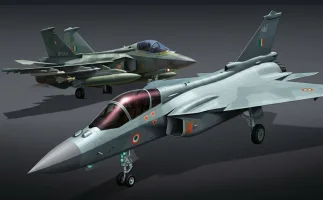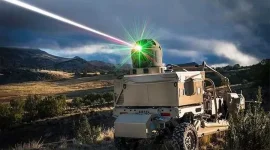- Views: 1K
- Replies: 4
In a significant move to accelerate India's ambition for a fully indigenous fifth-generation fighter jet, the French firm Safran S.A. and the Gas Turbine Research Establishment (GTRE) are poised to sign a landmark joint venture agreement.
This partnership will focus on the co-development of a high-power, 120-kilonewton (kN) class engine, which is the critical next step for the nation's Advanced Medium Combat Aircraft (AMCA) MkII program.
The collaboration, valued at approximately $7 billion, is projected to deliver an operational engine within a 10 to 12-year timeframe. Crucially, the program is slated to produce an initial batch of 400 to 600 units, which will power the AMCA Mk2 fleet.
The design is also intended to be scalable, potentially reaching 140 kN for future sixth-generation aviation platforms.
The selection of Safran, confirmed by Defence Secretary Rajesh Kumar in September, positions India to achieve full Intellectual Property Rights (IPR) ownership over the advanced turbofan technology, a strategic advantage over rival bids like that from Rolls-Royce and a massive boost for self-reliance in aerospace manufacturing.
AMCA Prototype Repurposed for Engine Testing
To dramatically reduce the engine's flight validation timeline by several years, the partners have decided on a strategic shift: utilizing an existing AMCA prototype as a dedicated Flying Test Bed (FTB). This decision sidelines Safran’s initial proposal to use a modified Rafale jet for the trials.Sources indicate that one of the five AMCA prototypes, initially fitted with the American General Electric (GE) F414 engines (98 kN thrust class) for initial developmental flights, will be repurposed after its initial certification.
This approach leverages the aircraft’s native design, minimizes costly and time-consuming redesign of the airframe, and creates a streamlined pathway for engine integration.
This strategic pivot is expected to fast-track the AMCA Mk2’s operational readiness, potentially making it combat-ready by the mid-2030s.
Advanced Technology for Supercruise Capability
The core of the impending 50:50 joint venture is the transfer of French expertise, particularly the advanced variable-cycle engine architecture refined from Safran’s M88 engine that powers the Rafale.The new 120 kN engine will feature a dry core outputting 73 kN of thrust, achieving its full wet thrust with the afterburner.
Advanced features will include a Full Authority Digital Engine Control (FADEC) system and a high turbine entry temperature of 2,100 Kelvin.
This combination promises a significant 20% improvement in efficiency compared to the GE F414 engine, which is vital for enabling supercruise—supersonic flight without engaging the fuel-guzzling afterburner—without compromising the aircraft’s stealth characteristics.
Open-source information confirms that this new engine is also being designed to have the exact physical dimensions and interfaces of the GE F414, a "plug and play" design that will allow for easy retrofitting into existing and future airframes like the Tejas Mk2 and the Twin Engine Deck Based Fighter (TEDBF), simplifying logistics across the Indian Air Force and Navy fleets.
Ground trials are scheduled to conclude at GTRE’s Bengaluru facility by 2030–31, with mass production for over 200 AMCA jets, and potentially the TEDBF, expected to begin ramping up by 2035.
Hybrid Testing to Cut Certification Time
Following the ground rig tests, the repurposed AMCA prototype will undergo a unique modification: asymmetric installation. One engine bay will house the nascent 120 kN Safran-GTRE engine for performance benchmarking, while the other will retain a reliable 98 kN GE F414 to ensure balanced flight dynamics and safety.This hybrid test configuration is a major factor in the compressed 10+2 year roadmap and is expected to slash certification timelines by an additional two to three years.
Testing the new engine directly on the stealth-optimized AMCA airframe allows engineers to immediately iron out integration issues, such as nacelle alignment and supercruise quirks, ensuring the definitive Mk2 design is robust from the outset.
The overall AMCA program is on schedule, with five prototypes set to use the interim F414-INS6 engines for initial flights, targeting a first flight in 2028 and initial operational clearance by 2032.
This strategy ensures that the AMCA MkI rollout is not delayed, while the Indo-French engine simultaneously progresses towards powering the final, more potent MkII variant by 2035.




